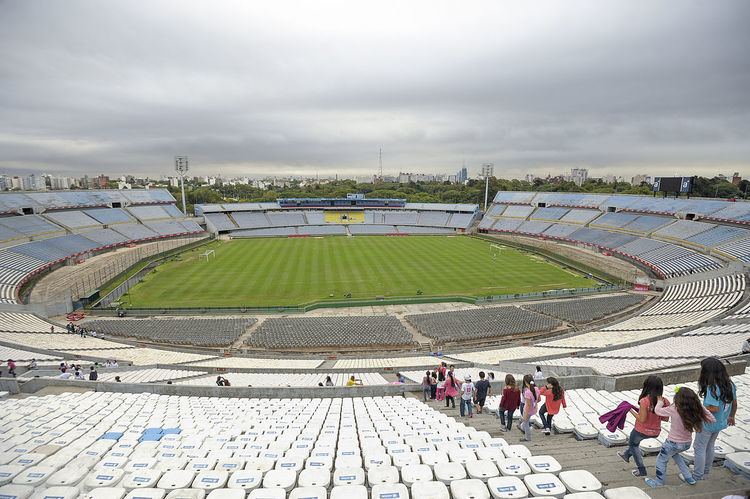Full name Estadio Centenario Capacity 60.235 Opened 18 July 1930 | Operator AUFI Field size 105 x 68 m Phone +598 2487 2059 Construction cost 1 million USD | |
 | ||
Teams Peñarol, Uruguay national football team, Club Nacional de Football, Uruguay national under-20 football team Similar Estadio Gran Parque C, Estadio Campeón del Siglo, Solís Theatre, Estadio Pocitos, Palacio Salvo | ||
Spot gracias estadio centenario
Estadio Centenario is a stadium in the Parque Batlle neighborhood of Montevideo, Uruguay, used primarily for football. The stadium was built between 1929 and 1930 to host the 1930 FIFA World Cup, as well as to commemorate the centennial of Uruguay's first constitution. It is listed by FIFA as one of the football world's classic stadiums, along with the likes of the Maracanã, old Wembley Stadium, the San Siro, the Estadio Azteca, and Santiago Bernabéu Stadium. On July 18, 1983, it was declared by FIFA as the only historical monument of World Football, the only building of its kind (worldwide).
Contents
- Spot gracias estadio centenario
- Video a reo del estadio centenario montevideo uruguay desde lo alto
- History
- Tenants
- Grandstands
- Concerts
- References
The Uruguayan national team has always been a threat when playing in their home stadium, consistently beating top teams. Even the top ranked Brazil national football team has only managed three wins in 20 opportunities, although only one was an official match.
Video a reo del estadio centenario montevideo uruguay desde lo alto
History
The construction of the Centenario is one of the most important stages in the development of sports in South America and international football. It was built especially for the organization of the 1930 FIFA World Cup, by immigrant workers in a record time of nine months. Its name originates from the celebration of 100 years of the ratification of the first Constitution of Uruguay.
Initially, all World Cup matches were to be played in the Centenario. However, heavy rains in Montevideo delayed construction of the stadium, so that several matches had to be played in the Pocitos Stadium of Club Atlético Peñarol, and the Parque Central of Club Nacional de Football. It was inaugurated on July 18, 1930, in the match between Uruguay and Peru, with the Skyblue gaining victory 1–0, with a goal by Hector "Manco" Castro.
The final match of the inaugural World Cup matched Uruguay and Argentina, with Uruguay winning 4–2. Since then, the Centenario has been the scene of Copa America (1942, 1956, 1967, 1995), two South American Youth Championship (1979, 2003), a South American Under-17 Football Championship (1999) and 1980 Mundialito.
Tenants
Aside from the Uruguayan national team, any football club can rent the stadium for its home games. Peñarol has done that for nearly every game in the past years, while Nacional rents it for some international games. In the case of other Uruguayan teams, they often decide to play there against both Peñarol and Nacional.
Grandstands
The stadium has four Grandstand separated by four lanes. The main one is the Olympic Tribune (and lower Platea known as Olympic), which is named so because the team had won two Olympic championships in a row (1924 and 1928). This has a maximum capacity of 21,648 spectators located in the three rings and the audience. Then there are the "popular", so called because they are sold cheaper, these are: theColombes, in honor of the Colombes, France in which the national team became Olympic champions 1924 and Amsterdam, because it was where the Celeste were crowned Olympic champions for the second time in 1928. The Grandstand Colombes accommodates 13,914 spectators while the Amsterdam accommodates 13,923. The America Tribune is parallel to the Olympic one. There are also "VIP" boxes and press boxes with room for 1,882 spectators, as well as the platform has room for 2,911 spectators, and additionally the grandstand has room for 5,957 people.
Concerts
The stadium has held numerous concerts by both national and international artists such as:
